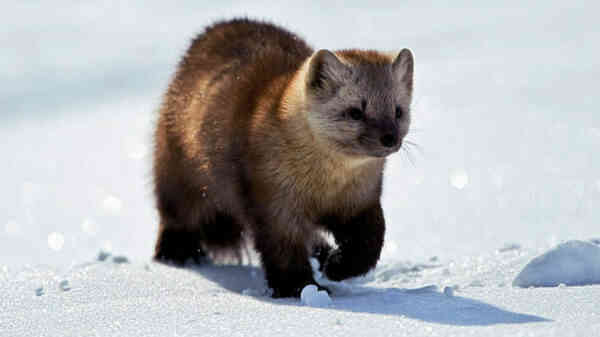Nimble and agile, representatives of the mustelid family are very smart animals, and they are excellent at surviving in the forest. A warm coat warms them in cold weather, and an incredible reaction, innate cunning and courage help them hunt and avoid dangers. Relatively small sables usually prefer to avoid encounters with larger predators, but if it is impossible to escape, they fearlessly defend themselves to the last.
Interesting facts about sables
- Adult animals are usually not long exceed half a meter, not counting the tail. Also very long and fluffy.
- Sables come in a variety of colors, it is light yellow to almost black.
- The taiga forests of Siberia form the basis of the habitat of sables (interesting facts about the taiga).
- These animals are excellent tree climbers. True, they do this infrequently.
- On the ground, sable usually moves by jumping, and does not run. Moreover, he moves very quickly in this way, despite the fact that the length of the jump is on average equal to the length of his body.
- Due to the special structure of the paws, sables do not fall even in loose snow, and calmly walk through snowdrifts.
- These animals do not have sharp eyesight, but they have very good hearing and a phenomenal sense of smell.
- Every year, in the Krasnoyarsk Territory alone, sables eat several million squirrels. Moreover, the basis of their diet is made up of other animals, mainly mice and chipmunks (interesting facts about squirrels).
- Cunning and dexterous sables often attack even hares. Since they are usually unable to catch up with them, they attack from an ambush.
- They also willingly include berries in their menu, especially lingonberries, blueberries, mountain ash and blueberries.
- In the wild, sables are found only in two countries – in Russia and Japan. Once they were found in Poland, Finland and the Baltic countries, but they were all exterminated there, several centuries ago.
- Hunters, especially poachers, pose the main threat to sables. Because of its beautiful, soft and warm fur coat, this animal actively shoots back.
- Sables and related martens sometimes interbreed, bringing offspring called kidas. Unlike other interspecific hybrids, kidas are usually not sterile.
- Given their modest size, sable is much stronger than most other animals of similar size.
- These animals are not very picky in food. Usually they attack any prey that is inferior to them in size.
- The sable always keeps its den clean, regularly getting rid of old bedding. He also moves away to relieve himself, so that smells do not betray his presence.
- Sables do not usually build shelters on their own. They prefer to equip natural shelters to suit their needs, and on occasion they can take someone’s empty hole.
